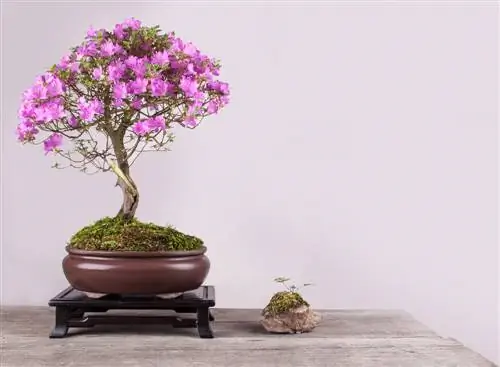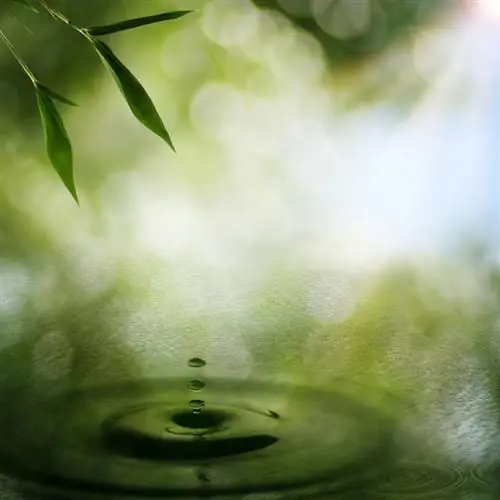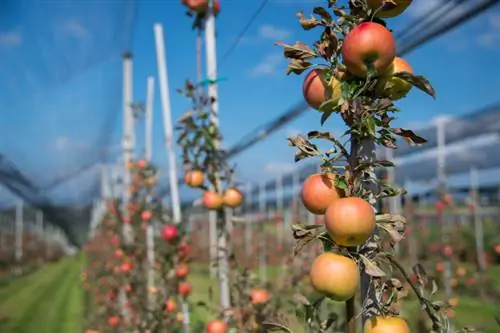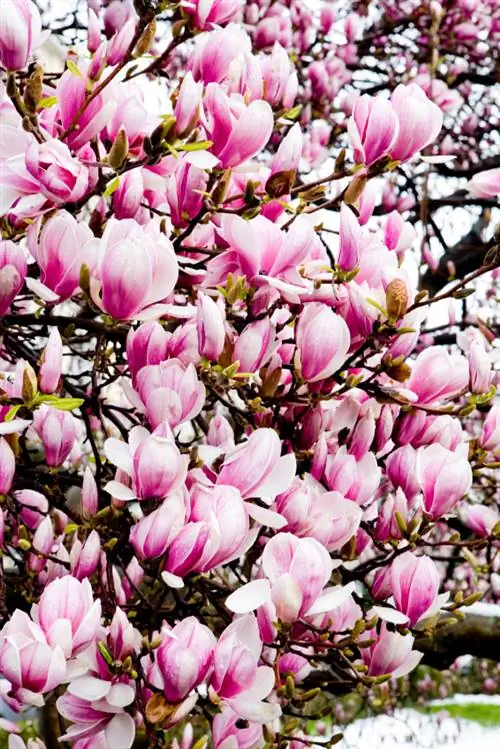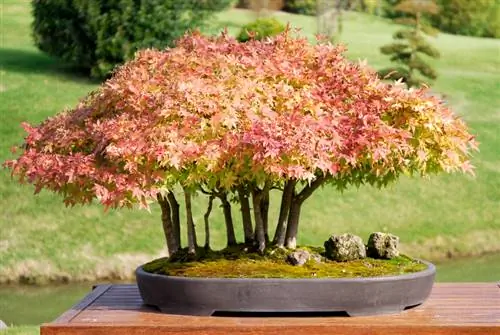- Author admin [email protected].
- Public 2023-12-16 16:46.
- Last modified 2025-01-23 11:22.
Rhododendrons represent spring in Japan. They are known under the collective name Satsuki and, like pine and maple, are particularly popular in the art of bonsai due to the variety of varieties. Translated, the genus name means rose tree.

How to care for a rhododendron bonsai?
A rhododendron bonsai requires regular trimming, pruning and wiring for the ideal shape. For bonsai design, choose species with small leaves, such as Japanese azalea, Satsuki azalea and Kaempferis azalea.
Suitable species
The Rhododendron genus includes more than a hundred species and over a thousand cultivated forms. Specimens with small and leathery leaves are suitable for bonsai design. These are evergreen and retain their foliage throughout the winter months. Such representatives have their origins in Asian countries. Depending on the variety, the flowering period extends from spring to summer. The varieties bloom in every color imaginable, from white to yellow and pink to red, blue and purple.
Azaleas suitable for outdoor bonsai:
- Japanese Azalea: Rhododendron obtusum (Japanese: Kurume tsutsuji)
- Satsuki Azalea: Rhododendron indicum (Japanese: Satsuki)
- Kaempferi's Azalea: Rhododendron kaempferi (Japanese: Yama tsutsuji)
Design options
Rhododendrons are suitable for almost all styles. They form a beautiful nebari and are characterized by rapid growth. Azaleas branch well along the entire trunk, so they develop many tiers within a short period of time. Due to this ability, drastic pruning is not a problem and is often used as a design method.
Shaping a Bonsai
During the growing season, young plants are trimmed every six to eight weeks. Shortly before flowering, remove any shoots that grow steeply upwards or point downwards. Select the flower buds so that the tree does not put too much energy into the flower bloom. Young shoots that develop near the buds are broken off.
After flowering, cut off the new shoots when they have reached three to four centimeters in length. To get more volume in the crown, you can shorten last year's shoots to one or two pairs of leaves. Make sure to shorten the top of the tree crown as little as possible. This part of rhododendrons is the area with the lowest growth performance. Intensive interventions carry the risk of drying out.
This is what you need to pay attention to
As you progress, focus not only on the annual growth, but also on the strong old branches. Japanese art recommends removing the main branches when the tree is at least twelve years old. Then start shaping again. In this way you revitalize the bonsai. However, thick branches should not be shortened down to the branch ring, as azaleas tend to withdraw sap.
Wiring
With copper wire (€11.00 on Amazon), thicker branches can be shaped after flowering and pruning. To make it gentler on the tree, you can wrap the wire with paper tape. If shoots are too young, there is a risk of injury as the bark is very sensitive. Mature wood is highly brittle and should be shaped using bracing methods.

